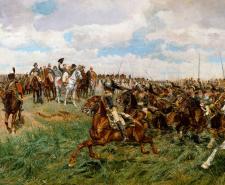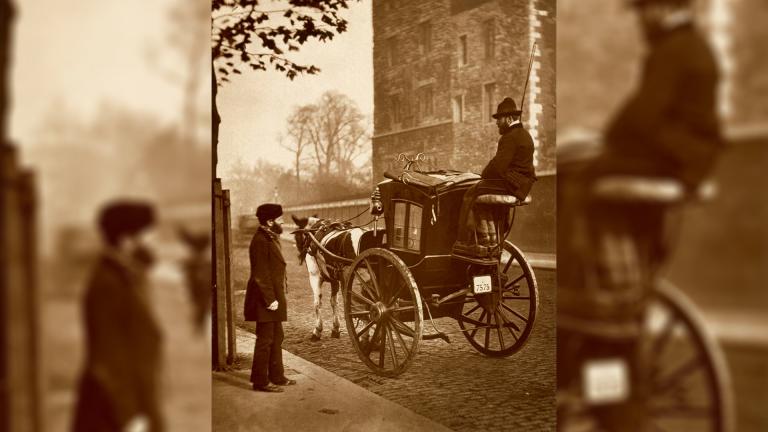
Read more about Ancient History

When a big global crisis strikes, it’s easy to feel despondent. One obvious recent example is the COVID-19 pandemic which engulfed the world in 2020.
Scientists have warned that climate change could lead to further large-scale disease outbreaks. However, that’s certainly not the only reason why many people have become increasingly concerned about the state of the environment.
Despite the constant doom and gloom in the news, there remain good reasons to be hopeful about the planet’s future. One is that this isn’t the first time humanity has felt helpless in the face of a growing crisis. In the 1890s, urban-planning experts were struggling to contend with what has been dubbed the Great Horse Manure Crisis.
In an age when horse-drawn transport was the norm, city streets were in danger of disappearing under several feet of equine dung. What risks did this issue pose, and how was it all unexpectedly resolved? Sky HISTORY investigates…
The Sky HISTORY series Hazardous History With Henry Winkler paints a picture of the Great Horse Manure Crisis and how it originally emerged.
Hazardous History With Henry Winkler starts Monday 17 November 10pm on Sky HISTORY and HISTORY Play.
To say that road transport relied on horses in the late Victorian era would be a serious understatement. If you’ve watched TV dramas set in this period, you’ve probably seen more than one example of the ‘hansom cab’. This type of carriage was designed earlier in the century by the York-born architect Joseph Hansom.
An individual hansom cab could be pulled by a single horse. In 1900, London’s streets were packed with over 11,000 hansom cabs. London also had several thousand buses, each of which would be pulled by 12 horses per day.
All in all, then, there would have been more than 50,000 horses clip-clopping across the British capital on a daily basis. The same sounds would have been ringing around the streets of New York City. The US city was estimated to have 170,000 horses by 1900.
To people today, travelling by horse-drawn carriage might sound like a very romantic notion. However, the practical reality could be quite different.
One reason why is that a horse produces about 15 to 30 pounds of manure daily. In the 19th century, this excrement would accumulate in the streets. There, it inevitably attracted large numbers of flies, leading them to spread diseases like typhoid fever.
The unhygienic state of the city streets would be exacerbated by the roughly two pints of urine produced by each horse day after day. It’s also worth remembering that in the 1890s, the life expectancy of a working horse was only about three years. So, horse carcasses tended to pile up as well.
There was once a time when horse manure could be disposed of with relative ease. After all, it could serve as fertiliser, making it very useful to farmers. Unfortunately, by the 1890s, there was simply too much of it to go around. As a result, many horse owners actually had to pay to get rid of leftover manure.
What was going to happen if this crisis continued unabated? In 1894, The Times newspaper reportedly warned that every London street would be buried under nine feet of manure in 50 years.
In 1898, the situation was supposedly discussed at an international urban-planning conference held in New York. Apparently, the event was wrapped up after just three days — rather than the previously scheduled ten — because the delegates failed to find a remedy. Urban civilisation had to wait a little longer for its saviour…
With hindsight, it’s not too hard to figure out why the Great Horse Manure Crisis faded into history. Quite simply, urban dwellers soon no longer needed to use horses to get themselves around.
In October 1908, entrepreneur Henry Ford introduced the Ford Model T automobile to the consumer market. The vehicle was revolutionary for its reliability, low cost and mass appeal. By the 1920s, the Ford Motor Company had sold more than 16 million Model T automobiles.
Other pioneers in the automotive space included Henry Ford’s contemporaries Karl Benz and Gottlieb Daimler. By the 1910s, motor cars and electric trams had largely supplanted horse-driven vehicles on public roads.
What other crises have humans managed to avert? For answers to that question, subscribe to the Sky HISTORY Newsletter. That way, you can look forward to being among the first to hear about our latest programmes as they arrive.